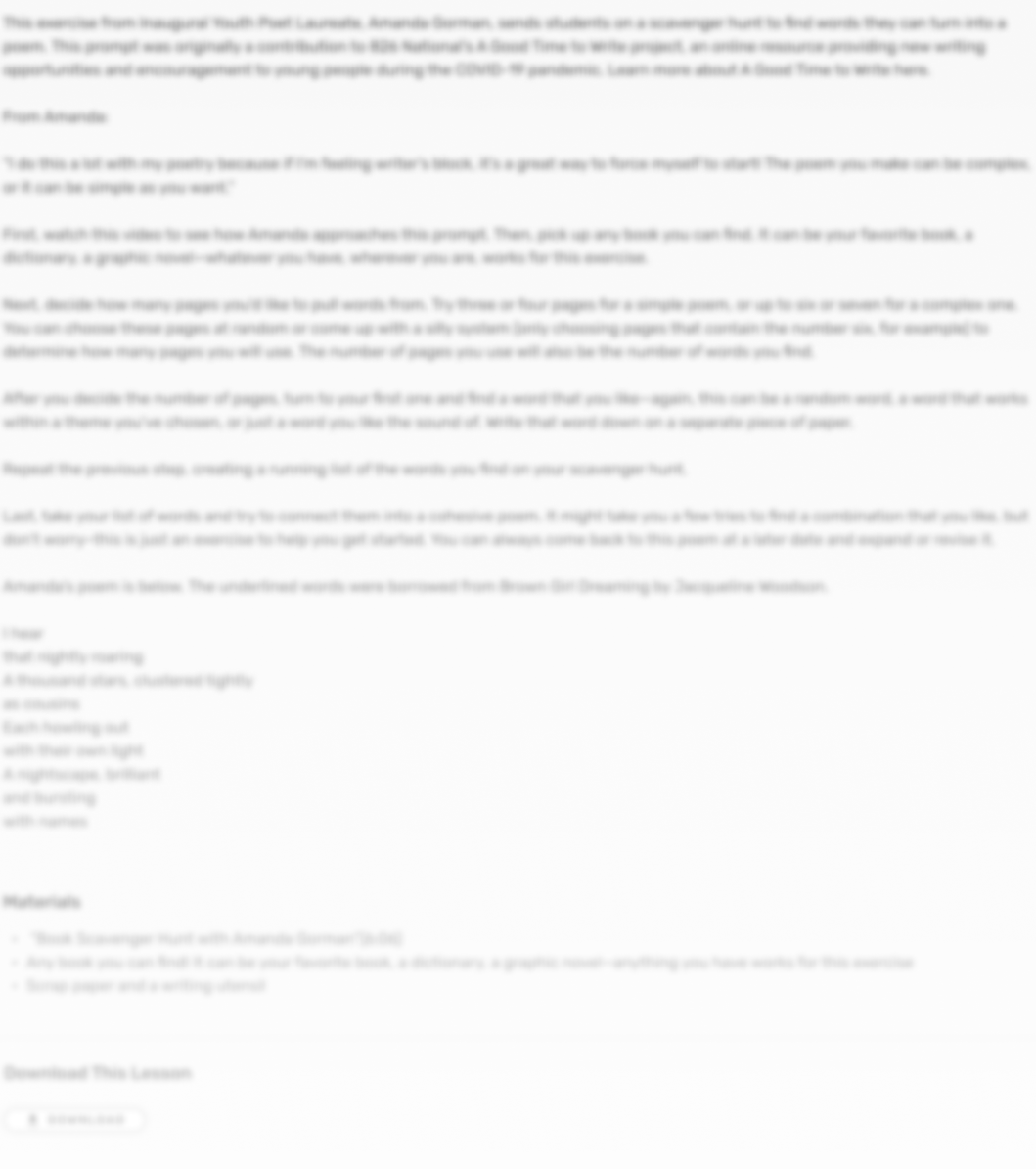 Grades 4–5
Grades 4–5 60+ Minutes
60+ Minutes Poetry
Poetry Videos
VideosNAOMI KU lives in downtown LA in an apartment. When she’s not at 826LA, she’s usually at her middle school called Thomas Starr King. On the weekends, she walks across her street to an urban community garden. Some of her hobbies include playing video games with friends and family and reading! She hopes her poem inspires people to think about their favorite desserts and helps them imagine the image in their heads using all their senses.
Congratulations to 826 Digital Writers’ Showcase Finalist, Naomi Ku! Watch her video and see the lesson below to learn how to write a story about YOUR favorite food. Read more about Naomi and the other finalists at www.826national.org/826-digital-writers-showcase-2023-finalists


STEP 1
First, watch the video and follow along with the Mentor Text on page 1 of the Pumpkin Pie!!!: Favorite Food Stories — Handout. When you’re done, answer this question in your writing journal: “What is your favorite food? Why is this your favorite food?” Then, underline at least 5 of the sensory words that can be found in the Mentor Text. Sensory words describe elements of people, places, and things that align with the 5 senses: sight, sound, smell, taste, and touch/feeling.
STEP 2
Answer the questions on page 2 of the handout to start thinking about your favorite food.
STEP 3
Now that you’ve identified your favorite food, create a list of sensory words that describe your food on page 3. There’s a vocabulary list on page 4 if you need some help thinking of words. Try to avoid words like “yummy”...

by Mac Barnett
Mac Barnett, a New York Times-bestselling author of stories for children, illustrates how to end a story...or not.
by Mychal Threets, librarian and literacy ambassador
Librarian and literacy ambassador Mychal Threets invites you to write about your feelings, your way with four writing prompts to explore your emotions on the page.
by 826 National
In this lesson, you will create a simple scrapbook that showcases the facts, definitions, and details you’ve learned about a few of the items you found in a scavenger hunt.
by 826 National, featuring Raiya Chhabra, Grade 5, VA
In this lesson, you will generate rhymes to use in a poem.
by 826 National, featuring Milo Wu, Grade 2, NY
In this lesson, you will introduce an animal you know a lot about as the narrator of a story. The narrator will provide descriptive details ask the reader "Guess who?" at the end.
by 826 National, featuring Isaac Reynolds, Grade 6
What’s the moral of the story? In this lesson, students practice identifying and summarizing a moral in a fable written by a sixth grader.
by Daniel Handler
Author Daniel Handler, aka Lemony Snicket, shows there are no limits to imagination with this interviewing activity.
by Molly Sprayregen, 826CHI
Writer and 826michigan staffer Denise Ervin writes alongside students to show what feelings sound like.
by Amanda Gorman
Presidential Inaugural Poet, activist, and bestselling author Amanda Gorman shares one of her favorite techniques for starting a poem or getting over writers' block.
by Charlotte Yeung
Midwest Youth Poet Laureate Ambassador, Charlotte Yeung, shares one of her favorite brainstorming strategies for creating a new piece.
by 826 National
Misinformation Specialist with Google Nidhi Hebbar shares how you can use writing to inspire change and bring people into conversations about the issues you care about.
by Cristeta Boarini, 826 MSP
Journalist and 826 MSP staffer, Cristeta Boarini, shares a poetry prompt that walks students through using shapes to convey meaning.
by 826 National
In this lesson, you will create a character and show how a character would respond in a specific situation by writing dialogue, resulting in a silly scene.
by 826 National
Novelist and short story writer, Caitlin Horrocks, reads "My Full Yard" by Marisol of 826michigan and reflects on the imagery used in the poem.
by Kinyel Friday, 826michigan
Children's book author, and 826michigan staff member, Kinyel Friday shares a social emotional learning prompt that uses personification to bring emotions to life.
by 826 National
Author and illustrator Lisa Brown reads "Owl Girl. In this lesson, you will write a superhero story that introduces your character and establishes the context for your reader.
by 826 National, featuring Iman Abdullah, Grade 2, 826NYC
Have you ever thought about what you have in common with an animal? In this lesson, students will write a comparison poem that explores these similarities and differences.
by Javier Zamora, 826 Valenica alumni and New York Times bestselling author
Author Javier Zamora invites you to raise your voice and write to the next President of the United States.


We are thrilled to have you as the newest member of our online community. Stay up-to-date on the the latest and most relevant resources, student publication opportunities, and what’s new with the 826 Digital community.
